A Brief History
Early Centuries:
In 1326 Pope John XXII granted the Carmelites all the privileges and exemptions of the Franciscans and the Dominicans. When they arrived in Kinsale, around 1334, their identity as friars and mendicants was already well established. Robert Fitzrichard Balrain built St Mary’s Abbey in Kinsale and offered it, along with twenty-nine acres of land in the Liscahan area of the town, to the Carmelites. Since their foundation was outside the town wall, they were granted their own gate, Friar’s Gate, which facilitated their ministry in the town. Although this wall was destroyed in 1690, Friar’s Gate remained in use until 1794.
Over the years, the friars attended to the pastoral needs of the people drawing on their particular charism of prayer, community and service. It is interesting that the Carmelites in the Abbey had a copy of the Kilcormac Missal. The original manuscript of this specifically Carmelite Missal, dating from 1460, is now preserved in Trinity College, Dublin.
Sixteenth Century:
The Dissolution of the Monasteries by King Henry VIII led to the suppression of St Mary’s Abbey in 1541. The Abbey consisted of a church, belfry, hall, other houses and a cemetery. Anything of worth was disbursed. In the aftermath, the Abbey was put to many uses. By 1567 the property termed “the house of the Friars of Our Lady of Kinsale” was leased to Robert Meade (merchant) for twenty-one years and subsequently leased on to other merchants.
The friars dispersed, but some remained in the hinterland. It would appear that they moved for a time to a house, on the junction of the Bandon and Rock roads, known as “ye olde masshouse”. The junction was known popularly as the Holy Corner since Mass had continued to be celebrated there. People also gathered at the nearby Abbey Well to recite the rosary and other prayers, despite the risk of persecution. During the Siege of Kinsale in 1601, the Abbey buildings were destroyed by the guns. There is no evidence of Carmelites being in the precinct of the Abbey at that time.
Seventeenth Century:
Around 1626, the Discalced Carmelites arrived in Ireland. They tried to revive the Carmelite presence in some of the old Order’s suppressed foundations, including Loughrea in Co. Galway and Kinsale. They were successful in the former but failed to gain a foothold in Kinsale. By 1653 they had abandoned their mission there.
The Act of Restoration of 1660 eased the plight of Catholics for a time. In 1670 a William Galwey offered the Carmelites a site at Rathmore Beg (known as Stonewell). They built a house there. The Banishment Act of 1697, which sought to exile all religious from the country, again made life very perilous for the Carmelites in Kinsale. Individual friars, however, managed to find protection and lodgings with well-disposed local people including some Protestants, in places such as Ballintubber Wood, Rincurran, Knopogenaree (Fort Hill), Kilmonoge (Ringanane), Clontead, and De Courceys (Old Head and Gortnacrusha).
Eighteenth Century:
It was from the forementioned social and religious environment that a local youth – Tadgh (Raymond) O’Connell, born in 1693 – joined the Carmelites. He was sent to Europe for his studies. The port of Kinsale would have facilitated the departure and entry of friars to and from Europe. After ordination, Fr Tadgh returned to Kinsale. In his ministry, he noticed how Irish-speaking Catholics had little or no spiritual reading at their disposal. He was Prior in 1755 and working on his translation into Irish of Trompette du ciel (Trompa na bhflaithas) and Misterios del monte Calvario.
In 1720 the friars had tried to return to Rathmore, but it was 1730 before they had managed to find a suitable permanent site. In that year, a local Protestant landlord – Francis Kearney – from Garrettstown, offered them a plot of land on Lower Catholic Walk on the edge of the town. This is the site of the present church and friary.
By 1737, the Carmelites had built a church, friary and small outhouse, and cultivated a garden. Fr Denis Mahony was appointed Prior in 1739. Two years previously, he had somehow purchased the site of the church and friary. This was contrary to the penal laws, and he was subsequently arrested and imprisoned in 1747 for illegally owning land. Francis Kearney intervened on Fr Mahony’s behalf and presented his own credentials to the property. An indication of Fr Mahony’s standing among the people was his appointment as Town Almoner later that year.
It would seem that the church was badly damaged by the military in 1785 and had to be rebuilt. This rebuilding was carried out by Fr Laurence Callanan. Fr Callanan, from Kilbrittain, had joined the Order at Kinsale and, like Fr Tadhg O’Connell, was sent to the Continent for his studies. On his return to Ireland, he ministered in Kinsale and surrounding areas.
Nineteenth Century:
Fr Michael Lulum was appointed Prior in 1834. Fr Callanan was the only other friar with him at this time. As the church was again in very poor condition, Fr Lulum set about building a new one. Work began in 1837 but it was not completed until 1850. It is a great tribute to the people of Kinsale and surrounding areas that they supported this project with contributions, materials and labour, at a time when the country was struck by the Great Famine. Fr Lulum travelled to England to raise funds and Fr Theobald Matthew, the great Temperance promoter, came to Kinsale to preach a charity sermon in support of the church.
This church is largely the one we know today. It is built in a Gothic Revival style. The facade is of cut limestone, hewn in Kilnacloona Quarry, ferried across the Bandon river to Ferry Point and hauled up to the Friary from there.
A new friary was built in 1854. Additional works were carried out on the church later in the 19th century, including the development of a pentagonal sanctuary, the plastering of the interior, and the installation of a timber ceiling and gallery that highlighted the woodwork skills honed in the local shipbuilding yards. The wall, backing the impressive marble high altar, carries a beautiful depiction of the Scapular Vision in Caen stone. It is surrounded by striking stained-glass windows donated by benefactors of the friary and dedicated to departed loved ones. From left to right they represent Saints Patrick, Brigid, John of the Cross, Mary Magdalene de Pazzi, Teresa of Avila, Andrew Corsini, and Peter and Paul. The window of Andrew Corsini is dedicated to the memory of Fr Patrick Parr who was Prior from 1871 to 1881. He was fondly remembered for his ministry. After his death in November 1881, at the age of 78 years, the people erected a monument in the Abbey graveyard with the inscription “In testimony of their respect for him and their appreciation of the services rendered to Religion by him and the other priests of the Carmelite Order, whose remains are interred within the precincts of the ancient abbey of Our Lady of Mount Carmel.”
In their ministry, the Carmelites became aware of the lack of opportunities for Catholics in second level education. The Provincial Chapter of 1871 had encouraged the opening of a classical school for boys in Kinsale. This became a reality when Fr Patrick Southwell opened St Mary’s Intermediate School in September 1880. This small school continued until 1891, the year in which the Presentation Brothers, whose main apostolate was education, came to the town.
Twentieth Century:
In 1917, the Order decided that Kinsale should become the Novitiate house. This eventually led to the building of two extensions to the existing friary, one to the rear in 1928 and another to the righthand side, as novice numbers increased, in 1952. A grotto to Our Lady, opposite the church, was erected for the Marian Year in 1954.
A notable visitor to Kinsale in 1935 was Fr Titus Brandsma of the Dutch Province. He was preparing for a lecture tour in the United States. Fr Titus would die in Dachau Concentration Camp in July 1942 and is now Blessed Titus Brandsma, Martyr and Patron of Journalists. There is a portrait of him by Bandon Artist, Colette Mills, in the church.
Fr Malachy Lynch, who was mainly responsible for the restoration of the medieval Carmelite Friary at Aylesford in Kent, was novice director in Kinsale during the 1930s. A hand-crafted crucifix in the nave of the church was presented by Kinsale-born Carmelite and missionary Fr Tommy Fives, on behalf of his Zimbabwean parishioners in appreciation of the support and solidarity shown by friends of the friary during times of struggle and drought. The present Prior General of the Order, Fr Míceál O’Neill, was Prior between 2008 and 2012.
Recent years:
Adaptations were carried out in the church in the years following the Second Vatican Council. In 1988 a significant reordering and refurbishment took place, including the installation of an 1893-built organ from Abbey Church of Ireland in Waterford.
By the early 1990s, Kinsale had ceased to be the novitiate house. After some soul-searching, it was decided to carry out a major renovation of the friary buildings. This renovation facilitated a small retreat and spirituality centre. It also allowed for the use of the ground floor hall as a space for cultural and social events by the wider community. The renovated friary was blessed by the Bishop of Cork and Ross, John Buckley on May 20th 2007. The Mayor of Kinsale, Councillor Fred Treacy, and members of the Town Council were in attendance. The Mayor thanked the Carmelites for the ‘renewed commitment to the town.’ During the works, the Carmelite community moved to a temporary accommodation in Chapel Lane.
An extensive renovation of the church followed in 2017-2018, supported by the local people through a highly successful fundraising committee. The Carmelite Church and Friary continue to be significant in the spiritual and social lives of many people from the town and beyond.


